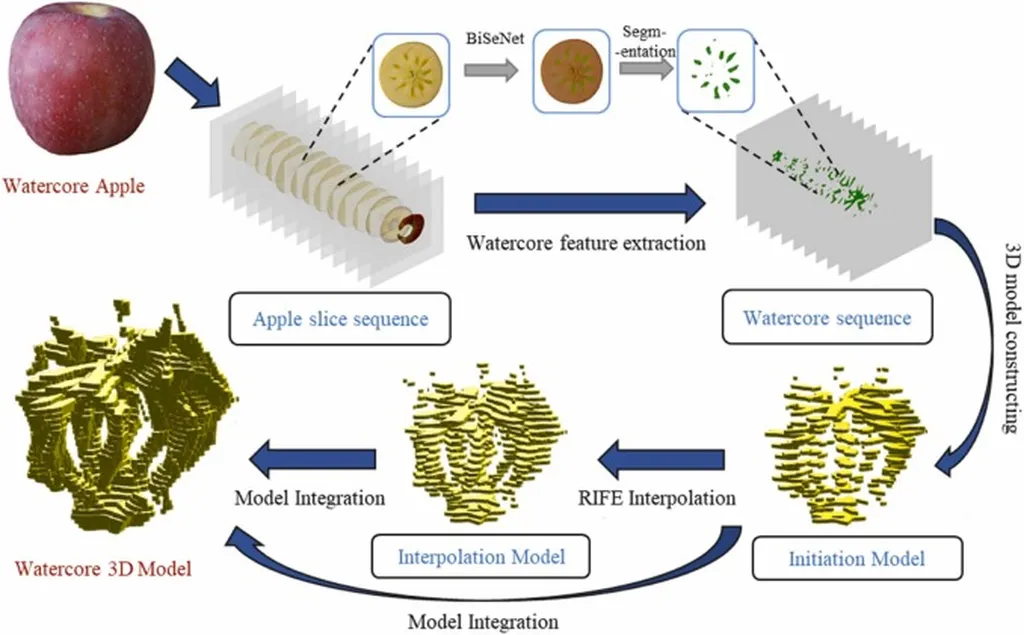In the quest to enhance apple quality assessment and food safety, a team of researchers led by Dr. YU Xinyuan from Nanjing Agricultural University has made significant strides. Their work, published in the journal ‘智慧农业’ (translated as ‘Smart Agriculture’), focuses on the non-destructive detection of apple watercore disease, a common physiological disorder that can significantly impact apple quality and storage life.
Apple watercore, often referred to as “sugar-glazed core,” is a condition that affects the fruit’s internal structure, leading to a distinctive flavor that consumers favor. However, severe cases can lead to mold growth during storage, posing food safety risks. Traditionally, detecting watercore has relied on manual, destructive inspections, a method that is inefficient and unsuitable for large-scale, automated production lines.
Dr. YU and his team set out to change this by developing rapid, non-destructive detection methods. They utilized hyperspectral imaging and X-ray computed tomography (CT) to analyze apples with varying levels of watercore severity. “Our goal was to create effective grading and soluble solids content (SSC) prediction models that could accurately assess watercore severity without damaging the fruit,” explained Dr. YU.
The team collected data from 230 Xinjiang Aksu Red Fuji apples, categorizing them into normal, mild, moderate, and severe watercore groups. Using advanced imaging techniques, they found that as watercore severity increased, so did the SSC of the apples. X-ray CT imaging revealed that watercore-affected regions had higher tissue density than healthy tissues, allowing for three-dimensional visualization of the internal distribution of watercore tissues.
The researchers then developed discriminant models using partial least squares discriminant analysis (PLS-DA), support vector machine (SVM), and convolutional neural network (CNN) algorithms. The PLS-DA-based grading model achieved impressive accuracies of 98.7% in the training set and 95.9% in the test set. For SSC prediction, the partial least squares regression (PLSR) model performed best, with a high coefficient of determination for prediction (RP2) of 0.879.
These findings have significant implications for the agricultural and food processing industries. “The developed grading model provides critical technical support for the creation of intelligent post-harvest sorting equipment,” said Dr. YU. This technology could revolutionize the way apples are sorted and graded, ensuring that only the highest quality fruits reach consumers while minimizing waste.
Moreover, the SSC regression model offers an efficient method for non-destructive detection and quality assessment of watercore-affected apples. This could lead to better inventory management and reduced food safety risks during storage and transportation.
The research conducted by Dr. YU and his team represents a significant step forward in the field of non-destructive fruit quality assessment. Their work not only enhances our understanding of apple watercore disease but also paves the way for more efficient and intelligent agricultural practices. As the demand for high-quality, safe produce continues to grow, technologies like these will be crucial in meeting consumer expectations and ensuring food safety.
With the publication of this study in ‘Smart Agriculture,’ the agricultural community now has a robust framework to build upon, potentially leading to widespread adoption of these non-destructive techniques in the near future. The commercial impacts of this research could be substantial, shaping the future of apple production and processing, and setting a new standard for quality assessment in the industry.

